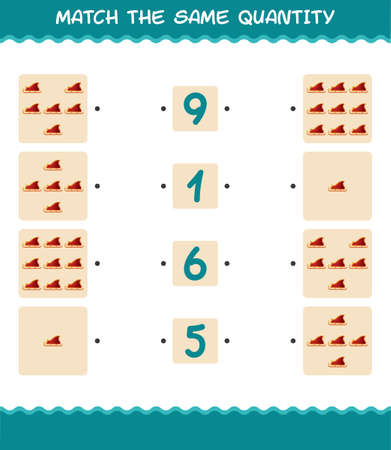1. Introduction to Bazi Compatibility
Bazi, also known as the Four Pillars of Destiny, is an ancient Chinese system that analyzes a person’s birth data to reveal insights about their character, life path, and relationships. Each person’s Bazi chart is composed of four “pillars”—the year, month, day, and hour of birth—each represented by a Heavenly Stem and an Earthly Branch. Together, these eight characters form a unique energetic blueprint for every individual.
Bazi has long been used in Chinese culture to assess compatibility between people, especially in romantic relationships and marriage. The system examines how the elements and animals in two individuals’ charts interact with each other, highlighting areas of harmony or potential conflict. Traditionally, Bazi matching was a crucial step before engagement or marriage, believed to influence not just personal happiness but also family prosperity.
In recent years, Bazi compatibility analysis has found new life among Chinese American communities. Many families and couples see it as a way to honor cultural heritage while navigating modern relationship challenges. In the U.S., Bazi consultations are often adapted to fit local values—such as prioritizing personal growth, open communication, and mutual respect—while still respecting traditional wisdom.
Overview of Bazi’s Role in Relationship Compatibility
| Aspect | Description | Common Adaptations in the U.S. |
|---|---|---|
| Chart Components | Year, Month, Day, Hour pillars (Heavenly Stems & Earthly Branches) | Westernized interpretations using English terms; focus on core personality traits |
| Element Interactions | Five Elements (Wood, Fire, Earth, Metal, Water) combine or clash | Comparison with Western astrology; emphasis on balanced dynamics |
| Compatibility Analysis | Identify supportive or conflicting elements/animals between charts | Focus on practical advice for communication and problem-solving |
| Cultural Significance | Affects decisions on marriage timing and partner selection | Blended with modern values such as love-based partnerships |
Bazi Compatibility in Chinese American Communities
Bazi has become a bridge between tradition and modernity for many Chinese Americans. While older generations may view it as essential for marital harmony and family fortune, younger generations often use it for self-discovery or as a fun way to learn more about themselves and their partners. Bazi readings can spark conversations about values and expectations—helping couples understand each other on a deeper level while embracing both Eastern wisdom and Western perspectives.
2. Yin-Yang Balance: The Foundation of Relationship Harmony
In Bazi (Chinese Four Pillars of Destiny), the concept of Yin and Yang is at the heart of understanding compatibility in relationships. Think of Yin and Yang as two complementary forces—Yin represents qualities like calmness, receptivity, and nurturing, while Yang stands for activity, assertiveness, and outward energy. In every Bazi chart, these energies are present in different proportions. When it comes to couples, their combined Yin-Yang balance can have a real impact on how they connect emotionally and interact day-to-day.
What Does Yin-Yang Mean in Bazi?
Each pillar in a Bazi chart (Year, Month, Day, Hour) contains elements that are either Yin or Yang. For example, Yin Wood is softer and more flexible, while Yang Wood is sturdy and upright. This applies to all five elements (Wood, Fire, Earth, Metal, Water), each having both a Yin and a Yang side. Ideally, a well-balanced chart contains a mix of both energies. When partners’ charts complement each other with balanced Yin and Yang elements, their relationship tends to flow more smoothly.
How Yin-Yang Balance Affects Couples
| Yin-Yang Combination | Relationship Dynamics | Common Examples |
|---|---|---|
| Balanced (Yin & Yang) | Harmony, mutual support, emotional stability | One partner’s assertiveness balances the other’s gentleness |
| Excessive Yang | Competitive energy, potential clashes, both may want control | Both partners strong-willed or outspoken |
| Excessive Yin | Lack of initiative, indecisiveness, emotional stagnation | Both partners passive or overly accommodating |
| Complementary Imbalance (One Yin/One Yang) | Dynamism with challenges; roles may become fixed (one always leads, one always follows) | One partner nurturing/supportive (Yin), the other active/decisive (Yang) |
The Real-Life Impact in American Relationships
In an American context, we might see this play out as one partner being the “go-getter” while the other is the “listener” or “supporter.” A healthy balance lets both individuals shine—think of couples who work well as a team because they bring different strengths to the table. But when there’s too much of one energy type—like two people always competing for the lead role or both avoiding decisions—it can create tension or leave issues unresolved.
Tuning Your Relationship’s Energy Mix
If you’re curious about your own relationship’s Yin-Yang dynamic, consider which roles you and your partner naturally take on. Are you both planners? Both easygoing? Or do your personalities fill in each others gaps? Understanding your Bazi compatibility can help you appreciate differences and find ways to work together—even if your natural energies sometimes clash. In the next section, we’ll look deeper into how specific elemental combinations further shape couple dynamics.

3. Heavenly Stems and Earthly Branches: Key Compatibility Pairings
When it comes to Bazi (Four Pillars of Destiny), understanding the combinations of Heavenly Stems and Earthly Branches is essential for exploring compatibility in romantic relationships. These unique pairings are believed to influence how two people connect, support each other, and experience growth together. In American culture, you might compare this to the idea of “chemistry” or being a “good match.” Here’s a look at some of the most common Bazi combinations that are thought to boost attraction and harmony.
Peach Blossom Combinations: The Spark of Attraction
The Peach Blossom combination is famous for bringing charm, romance, and likability into relationships. If someone has a Peach Blossom star in their Bazi chart, they tend to attract more admirers naturally—think of it like having an irresistible magnetism.
| Peach Blossom Animal | Associated Branch | Who Benefits Most |
|---|---|---|
| Rat (Zi) | Monkey, Rat, Dragon Day Masters | Those born in years or days with these signs |
| Rabbit (Mao) | Pig, Rabbit, Goat Day Masters | Often brings romantic opportunities |
| Horse (Wu) | Tiger, Horse, Dog Day Masters | Makes social life lively and attractive |
| Rooster (You) | Snake, Rooster, Ox Day Masters | Enhances charm and popularity |
The Three Harmony Trio: Building Long-Lasting Support
The Three Harmony Trio (San He) refers to three animal signs that form a triangle on the Chinese zodiac wheel. When these signs come together in a couple’s charts, they create strong teamwork and understanding—like having natural teammates in life and love.
| Trio Name | Animal Signs Involved | Main Relationship Benefit |
|---|---|---|
| Wood Trio | Tiger – Horse – Dog | Mutual encouragement and growth |
| Fire Trio | Snake – Rooster – Ox | Loyalty and shared goals |
| Metal Trio | Monkey – Rat – Dragon | Clever problem-solving together |
| Water Trio | Pig – Rabbit – Goat | Caring and emotional support |
The Six Harmony Pairs: Natural Partners in Life and Love
The Six Harmony Pairs (Liu He) are special animal sign pairings that represent deep connection and mutual help. If you find your partner’s sign is your harmony pair, it often means you can easily understand each other’s needs—even without words.
| Your Sign | Your Best Pairing Sign (Liu He) |
|---|---|
| Rat (Zi) | Ox (Chou) |
| Tiger (Yin) | Pig (Hai) |
| Rabbit (Mao) | Dog (Xu) |
| Dragon (Chen) | Rooster (You) |
| Snake (Si) | Monkey (Shen) |
| Horse (Wu) | Goat (Wei) |
How These Combinations Influence Relationships in Everyday Life?
If you notice these key combinations between you and your partner—or even in your friends’ lives—you may find that communication feels smoother, arguments resolve faster, or there’s just a natural spark that keeps things interesting. While not everyone will experience every positive trait described here, many people enjoy discovering these patterns as fun insights into what makes their relationships tick.
Bazi Compatibility: More Than Just Luck?
Bazi compatibility isn’t only about luck; it reflects the dynamic flow of energy between two people. Understanding these combinations can help couples appreciate their differences, leverage their strengths together, and grow closer over time—similar to how Americans value finding “the right fit” in both personality and values.
This practical approach to Bazi lets anyone explore relationship dynamics with curiosity—and maybe even discover new ways to support each other every day.
4. Clashing and Conflicting Elements: Navigating Tensions
In Bazi compatibility, not all element combinations are smooth sailing. Sometimes, partners bring together elements that naturally clash or conflict, leading to challenges in communication and trust. Understanding these patterns can help couples navigate their relationship dynamics more effectively, especially when tensions arise from incompatible energy interactions.
Recognizing Common Clashes in Bazi Relationships
Every Bazi chart is built on five core elements: Wood, Fire, Earth, Metal, and Water. Certain pairs of these elements are considered naturally incompatible. For example, Water extinguishes Fire, while Wood breaks through Earth. These clashes don’t mean a relationship is doomed, but they often signal areas where misunderstandings or disagreements are more likely to happen.
Typical Clashing Element Pairs
| Bazi Element | Clashes With | Common Relationship Issues |
|---|---|---|
| Wood | Earth | Lack of support, stubbornness |
| Fire | Water | Emotional volatility, miscommunication |
| Earth | Wood | Control struggles, feeling undermined |
| Metal | Fire | Harsh words, impatience |
| Water | Earth/Fire | Mistrust, emotional distance |
The Impact of Incompatible Elements on Communication and Trust
When two people’s main Bazi elements clash, it can show up as frequent arguments or a sense that you’re “talking past” each other. For instance, a Fire-type person (passionate and expressive) may feel misunderstood by a Water-type partner (calm and introspective). Over time, these differences can erode trust if not addressed thoughtfully.
Signs of Elemental Conflict in Relationships:
- Persistent Misunderstandings: Regularly feeling like your partner “just doesn’t get it.”
- Differing Problem-Solving Styles: One partner prefers direct action (Fire), while the other wants to reflect first (Water).
- Tension Over Values: Disagreement about priorities or ways to handle stress.
- Sensitivity to Criticism: Partners may take feedback personally due to elemental incompatibility.
Practical Tips for Managing Bazi-Based Conflicts
If you recognize clashing elements in your relationship dynamic, there are practical steps you can take to manage these challenges and build a stronger partnership:
- Acknowledge Differences: Recognize that differing viewpoints stem from natural elemental energy—not from malice or lack of love.
- Create “Safe Spaces” for Communication: Set aside regular times to talk about feelings without judgment or interruption.
- Cultivate Empathy: Try to see situations from your partner’s perspective. Ask questions like “How do you see this?” or “What would make you feel supported?”
- Avoid Escalation: When emotions run high (especially with Fire/Water clashes), take a break before returning to the conversation.
- Solve Problems Together: Treat conflicts as shared challenges rather than personal attacks—teamwork helps overcome elemental differences.
- Seek Balance Through Activities: Choose hobbies or routines that incorporate both partners’ strengths (e.g., creative projects for Fire types; planning sessions for Earth types).
- If Needed, Get Support: Couples counseling or relationship coaching can offer new strategies for bridging gaps caused by conflicting elements.
Bazi Clashes: Quick Reference Table for Conflict Management Strategies
| Element Pair Clash | Main Challenge | Tried-and-True Tip |
|---|---|---|
| Fire vs Water | Mood swings and misunderstandings | Practice active listening and cool-down periods before resolving issues. |
| Wood vs Earth | Pushing boundaries vs holding back change | Create compromise plans—blend innovation with stability. |
| Metal vs Fire | Criticism and impatience | Acknowledge each other’s efforts openly; avoid sarcasm. |
| Water vs Earth/Fire | Mistrust and emotional withdrawal | Nurture trust through consistent actions and honest check-ins. |
| Earth vs Wood | Differing priorities | Cultivate patience; celebrate small wins together. |
Navigating clashing elements in your Bazi compatibility isn’t about fixing your partner—it’s about understanding where friction comes from and working together toward better harmony. By respecting each other’s elemental nature and applying practical strategies, couples can transform tension into growth opportunities for their unique relationship dynamic.
5. Success Stories and Cautionary Tales
Bazi compatibility is a popular reference point for many Asian Americans navigating love, marriage, and long-term partnerships. Whether it’s parents checking the charts before giving their blessing or couples consulting an expert out of curiosity, these stories from the community highlight how Bazi can shape relationship dynamics—for better or worse.
Real-Life Success Stories
Many couples in the Asian American community have found confidence and harmony by following Bazi compatibility advice. Here are a couple of real examples:
Names (Pseudonyms) |
Bazi Combination |
Outcome |
|---|---|---|
| Emily & Kevin | Wood-Rat + Earth-Ox (Supportive Elements, Complementary Branches) |
Their families were initially worried about cultural differences, but their strong Bazi match reassured both sides. They report open communication and shared goals as key strengths in their marriage. |
| Sophia & Daniel | Fire-Horse + Metal-Tiger (Dynamic Elemental Clash but Harmonious Stems) |
Despite warnings about “clashes,” they worked with a Bazi consultant to understand each other’s temperaments. They use this knowledge to manage disagreements and play to each others strengths. |
Cautionary Tales: When Compatibility Charts Backfire
While many find guidance through Bazi, others encounter challenges when relying too heavily on the charts:
Names (Pseudonyms) |
Bazi Combination |
Impact |
|---|---|---|
| Linda & Jason | Water-Sheep + Fire-Monkey (Clashing Elements) |
Both sets of parents objected based on poor Bazi compatibility. The pressure led to constant second-guessing, straining the relationship until they eventually parted ways—though they later realized their issues stemmed more from external stress than real incompatibility. |
| Ming & Alex | Earth-Dragon + Wood-Rabbit (Neutral Elements, No Strong Affinities) |
They went ahead despite a “so-so” chart, hoping love would conquer all. However, whenever conflicts arose, relatives blamed it on their Bazi mismatch, which became a self-fulfilling prophecy and created unnecessary tension. |
Lessons Learned from These Stories
- Bazi as a Guide, Not a Rulebook: Many couples found success by using compatibility charts as one of several tools—not the only decision-maker.
- The Role of Family Influence: Parental opinions based on Bazi can either support or undermine a relationship’s stability.
- Cultural Integration: For Asian Americans, blending traditional wisdom with modern relationship values helps create balance between respect for heritage and personal happiness.
Takeaway:
Bazi compatibility can offer meaningful insights, but it works best when paired with open communication and mutual respect—reminding us that every relationship is unique, no matter what the charts say.
6. Integrating Bazi with Modern American Relationship Values
Bazi compatibility, an ancient Chinese system for analyzing relationship dynamics, offers valuable insights. However, applying it within the modern American context requires balancing tradition with current cultural values like autonomy, equality, and open communication. Let’s explore how you can use Bazi as a supportive tool while honoring the principles that shape contemporary American relationships.
Understanding the Differences: Traditional vs. Modern Perspectives
| Aspect | Traditional Bazi View | Modern American Perspective |
|---|---|---|
| Relationship Roles | Emphasizes harmony through complementary roles (Yin & Yang) | Focus on partnership equality and shared responsibilities |
| Compatibility Decisions | Bazi compatibility may strongly influence partner selection | Personal choice, chemistry, and shared values prioritized |
| Autonomy & Growth | Individual destiny sometimes seen as fixed by birth chart | Belief in growth, self-determination, and change over time |
| Conflict Resolution | Bazi may suggest accepting certain differences as fate-driven | Encourages open discussion and proactive problem-solving |
Blending Bazi Guidance with American Values in Your Relationship
- Use Bazi as a Conversation Starter: Approach your charts not as rules but as talking points. Discuss your strengths, challenges, and what you both value in your partnership.
- Prioritize Communication: If your Bazi shows potential clashes, don’t see them as deal-breakers. Instead, talk openly about how to address these issues together.
- Celebrate Individuality: Recognize that each person brings unique qualities to the relationship—Bazi can highlight these traits without limiting personal growth or choices.
- Find Middle Ground: Some couples enjoy blending traditions. For example, you might acknowledge auspicious dates or elements from Bazi while still making decisions based on mutual agreement and respect.
- Value Self-Determination: Remember that while Bazi offers insight, your relationship is ultimately shaped by your own actions, intentions, and shared experiences.
Bazi Compatibility in Practice: A Simple Example
| Bazi Combination Example | Traditional Interpretation | Modern Application Tip |
|---|---|---|
| Yang Wood & Yin Earth Pairing | Might indicate differences in approach (active vs. stable) | Acknowledge each others styles; create routines that balance spontaneity with stability. |
| Two Fire Signs Together | Pasionate but potentially volatile pairing | Cultivate shared hobbies to channel energy positively; practice cooling-off techniques during conflicts. |
| Water & Metal Pairing | Supportive dynamic (Metal nourishes Water) | Nurture teamwork; celebrate each others contributions to the relationship. |
The Takeaway: Making Bazi Work for You Both
Bazi compatibility can enrich your understanding of yourself and your partner—but it should empower rather than limit you. By integrating traditional wisdom with modern American values like autonomy and open communication, you can build a more fulfilling, balanced relationship that honors both heritage and personal choice.


